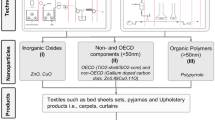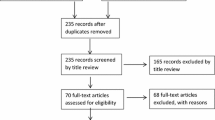Abstract
Assessing the health and environmental risks of engineered nanomaterials (ENMs) continues to be a challenging endeavor. Due to extensive challenges related to applying traditional risk assessment frameworks to ENMs, decision making regarding the use of ENMs in products and applications may need to rely on structured decision support tools such as risk ranking approaches. This study examines the use of one risk ranking tool that incorporates both quantitative and qualitative information regarding the potential human health risks of ENMs, focused primarily on worker and soldier health. Using a case study involving Army materiel (i.e., equipment), a relative risk ranking algorithm is proposed that accounts for not only the physicochemical characteristics of the ENMs, but also the characteristics of the Army materiel. In this way, the resulting risk potential for soldiers and workers is not solely based on the inherent characteristics of the ENMs but is also influenced within the context of the technology being developed. Among other important findings, the results from applying this risk ranking algorithm in this case study suggest that inhalation from accidental exposures to carbon nanotubes and copper flakes incorporated into energy and obscurant materiel by Army workers rank highest relative to the other items evaluated in this baseline assessment. As the presence of data gaps was one of the greatest challenges to applying this risk ranking algorithm, future applications may benefit from reliance on a continually revised database that may be updated in real time and possibly synced with publically available databases in order to use the most current and comprehensive set(s) of data available.




Similar content being viewed by others
References
Auffan M, Rose J, Bottero J-Y, Lowry GV, Jolivet J-P, Wiesner MR (2009) Towards a definition of inorganic nanoparticles from an environmental, health and safety perspective. Nat Nanotechnol 4:634–641
Boxall AB, Tiede K, Chaudhry Q (2007) Engineered nanomaterials in soils and water: how do they behave and could they pose a risk to human health? Future Med 2:919–927
Canis L, Linkov I, Seager TP (2010) Application of stochastic multiattribute analysis to assessment of single walled carbon nanotube synthesis processes. Environ Sci Technol 44:8704–8711
Chappell M (2009) Solid-Phase characteristics of engineered nanoparticles. In: Linkov I, Steevens J (eds) Nanomaterials: risks and benefits. Springer, Dordrecht, pp 111–124
Choi J-Y, Ramachandran G, Kandlikar M (2009) The impact of toxicity testing costs on nanomaterial regulation. Environ Sci Technol 43:3030–3034
Dowling A, Clift R, Grobert N, Hutton D, Oliver R, O’Neill O et al (2004) Nanoscience and nanotechnologies: opportunities and uncertainties. The Royal Society and The Royal Academy of Engineering Report, London, pp 61–64
DuPont (2007) Nano risk framework. Environmental Defense-Dupont Nano Partnership, Washington
Epa V, Burden F, Tassa C, Weissleder R, Shaw S, Winkler D (2012) Modeling biological activities of nanoparticles. Nano Lett 12:5808–5812
Grieger KD, Hansen SF, Baun A (2009) The known unknowns of nanomaterials: describing and characterizing uncertainty within environmental, health and safety risks. Nanotoxicology 3:222–233
Grieger KD, Linkov I, Hansen SF, Baun A (2012) Environmental risk analysis for nanomaterials: review and evaluation of frameworks. Nanotoxicology 6:196–212
Höck J, Hofmann H, Krug H, Lorenz C, Limbach L, Nowack B et al (2008) Precautionary matrix for synthetic nanomaterials. Federal Office for Public Health and Federal Office for the Environment, Berne
Kharat D, Muthurajan H, Praveenkumar B (2006) Present and futuristic military applications of nanodevices. Synth React Inorg Metal Org Nano Metal Chem 36:231–235
Linkov I, Seager TP (2011) Coupling multi-criteria decision analysis, life-cycle assessment, and risk assessment for emerging threats. Environ Sci Technol 45:5068–5074
Linkov I, Bates ME, Canis LJ, Seager TP, Keisler JM (2011) A decision-directed approach for prioritizing research into the impact of nanomaterials on the environment and human health. Nat Nanotechnol 6:784–787
Linkov I, Bates ME, Trump BD, Seager TP, Chappell MA, Keisler JM (2013) For nanotechnology decisions, use decision analysis. Nano Today 8:5–10
Meesters J, Koelmans A, Quik J, Hendriks A, van de Meent D (2014) Multimedia modeling of engineered nanoparticles with SimpleBox4nano: model definition and evaluation. Environ Sci Technol 48:5726–5736
Oberdörster G (2010) Safety assessment for nanotechnology and nanomedicine: concepts of nanotoxicology. J Intern Med 267:89–105
Oomen AG, Bos PM, Fernandes TF, Hund-Rinke K, Boraschi D, Byrne HJ et al (2014) Concern-driven integrated approaches to nanomaterial testing and assessment-report of the nanosafety cluster working group 10. Nanotoxicology 8:334–348
Pence HE, Williams A (2010) ChemSpider: an online chemical information resource. J Chem Educ 87:1123–1124
Stone V, Pozzi-Mucelli S, Tran L, Aschberger K, Sabella S, Vogel U et al (2014) ITS-NANO-Prioritising nanosafety research to develop a stakeholder driven intelligent testing strategy. Particle Fibre Toxicol 11:9. doi:10.1186/1743-8977-11-9
Tervonen T, Linkov I, Figueira J, Steevens J, Chappell M, Merad M (2009) Risk-based classification system of nanomaterials. J Nanoparticle Res 11:757–766
Thomas K, Sayre P (2005) Research strategies for safety evaluation of nanomaterials, Part I: evaluating the human health implications of exposure to nanoscale materials. Toxicol Sci 87:316–321
Turaga U, Singh V, Lalagiri M, Kiekens P, Ramkumar SS (2012) Nanomaterials for defense applications. Intelligent textiles and clothing for ballistic and NBC protection. Springer, Dordrecht, The Netherlands, pp 197–218
TUV/SUD (2012) Certification Standard CENARIOS®. TÜV SÜD Industrie Service GmbH, Munich, Germany
United States Environmental Protection Agency (USEPA) (2014) Estimation Programs Interface Suite™ for Microsoft® Windows, v 4.11., Washington, 2014
Winkler D, Mombelli E, Pietroiusti A, Trane L, Worthf A, Fadeelg B, McCallh M (2013) Applying quantitative structure-activity relationship approaches to nanotoxicology: current status and future potential. Toxicology 313:15–23
Acknowledgments
The authors wish to acknowledge the expertise provided by Dr. Christie Sayes of RTI International and Dr. Martin Philbert at the University of Michigan, as well as the invaluable input of Dr. Christine Hendren of Duke University; Megan Tulloch of RTI International for her contributions to the development of the ACCESS database and user interface; Chris Carroll at the US Army Public Health Command for his meticulous review and input throughout the project; and the numerous other U.S. Army subject matter experts that served as points-of-contact and provided the case study with invaluable data. This project was supported by the US Army Medical Research and Materiel Command, contract # W81XWH-12-P-0093.
Author information
Authors and Affiliations
Corresponding author
Additional information
Disclaimer: The views, opinions, and/or findings contained in this report are those of the authors and should not be construed as official Department of the Army position, policy, or decision, unless so designated by other official documentation. Citations of commercial organizations or trade names in this report do not constitute an official Department of the Army endorsement or approval of the products or services of these organizations.
Electronic supplementary material
Below is the link to the electronic supplementary material.
Rights and permissions
About this article
Cite this article
Grieger, K.D., Redmon, J.H., Money, E.S. et al. A relative ranking approach for nano-enabled applications to improve risk-based decision making: a case study of Army materiel. Environ Syst Decis 35, 42–53 (2015). https://doi.org/10.1007/s10669-014-9531-4
Published:
Issue Date:
DOI: https://doi.org/10.1007/s10669-014-9531-4




